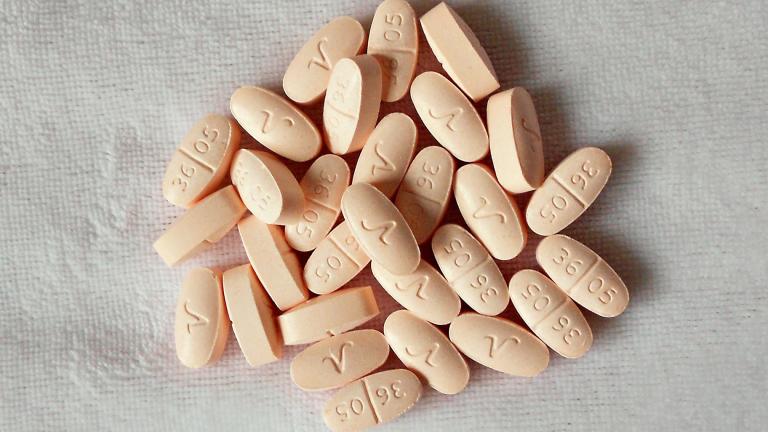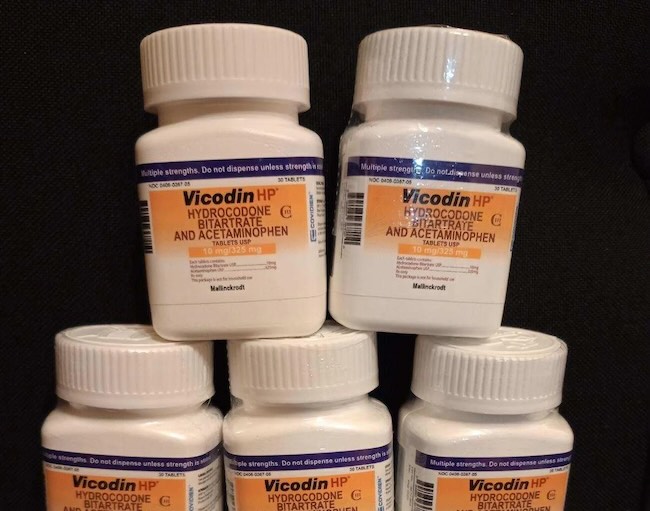Hydrocodone is a semi-synthetic opioid frequently prescribed to alleviate moderate to severe pain. As a Schedule II controlled substance under the DEA classification, it is recognized for its medical benefits but also for its high potential for abuse and dependency. Popular brand formulations include Vicodin, Lortab, and Norco, which combine Hydrocodone with other pain relievers like acetaminophen.
Hydrocodone is available in various forms, including tablets, capsules, and syrups, and is often tailored to individual patient needs. Its classification alongside potent opioids such as Oxycodone and Fentanyl underscores its role in pain management while highlighting the need for careful monitoring during use.
What Does Hydrocodone Look Like?
| Imprint | Color, Shape, Hydrocodone Content |
|---|---|
| M365 | White, oval tablet containing hydrocodone 5 mg and acetaminophen 325 mg. |
| M367 | White, oblong tablet containing hydrocodone 10 mg and acetaminophen 325 mg. |
| Watson 349 | White, oval tablet containing hydrocodone 5 mg and acetaminophen 500 mg. |
| IP 110 | White, capsule-shaped tablet containing hydrocodone 10 mg and acetaminophen 325 mg. |
| V 36 05 | Peach-colored, elliptical/oval tablet containing hydrocodone 7.5 mg and acetaminophen 325 mg. |
The appearance of hydrocodone tablets varies depending on the manufacturer. Imprints such as “M365” or “V 36 05” help identify the medication, dosage, and combination ingredients.
What Does Hydrocodone Feel Like?
Hydrocodone alleviates pain by binding to opioid receptors in the brain, altering the perception of discomfort. Many users report feeling relaxed or euphoric. While these sensations make hydrocodone effective for pain management, they also increase the risk of misuse. Common side effects include:
- Drowsiness
- Nausea
- Constipation
- Lightheadedness
Is Hydrocodone Addictive?
Hydrocodone is highly addictive due to its interaction with the brain’s reward system. Regular use, even when prescribed, can lead to dependency in a few weeks. Warning signs of addiction include increased tolerance, withdrawal symptoms, and a preoccupation with obtaining or using the drug. “The brain adapts quickly to opioids, reinforcing behaviors that seek out the substance,” said Dr. Amanda Harris, an addiction specialist.
Signs and Symptoms of Hydrocodone Addiction
Hydrocodone addiction often develops as tolerance builds, leading individuals to increase their dosage or frequency of use. Common indicators include intense cravings, neglect of responsibilities, withdrawal symptoms like anxiety and nausea, and continued use despite negative consequences. “Recognizing these signs early is critical for intervention,” said Dr. James Fields, an addiction specialist at the American Society of Addiction Medicine (ASAM).
Individuals struggling with addiction may also exhibit changes in behavior, such as secrecy or financial troubles linked to obtaining the drug. Learn more about identifying addiction at the National Institute on Drug Abuse.
How Long Does Hydrocodone Take to Work?
Hydrocodone typically begins to relieve pain within 20 to 30 minutes of ingestion, with peak effects occurring about an hour after consumption. Its pain-relieving effects generally last four to six hours.
Hydrocodone Withdrawal Symptoms
Withdrawal occurs when the body becomes dependent on hydrocodone and the drug is abruptly discontinued. Symptoms include fatigue, muscle aches, nausea, and anxiety. A medically supervised detox program can help alleviate these symptoms safely. “Withdrawal can be severe and should always be managed by healthcare professionals,” noted Dr. Evelyn Parker, a clinical toxicologist.
FAQ
Does Hydrocodone Show Up on a Drug Test?
Yes, hydrocodone can be detected in urine for up to four days, in blood for about 24 hours, and in hair for up to 90 days.
What Are the Brand Names of Drugs Containing Hydrocodone?
Common brand names include Vicodin, Norco, and Lortab.
Is Hydrocodone Addictive?
Yes, hydrocodone carries a high risk of addiction, especially when misused or taken over a prolonged period.
Comprehensive Treatment for Hydrocodone Addiction
Overcoming hydrocodone addiction requires a multi-faceted approach, including medically supervised detox, cognitive-behavioral therapy (CBT), and peer support groups. “Evidence-based treatments like CBT have been shown to significantly reduce relapse rates,” noted Dr. Karen Myers, a clinical psychologist specializing in substance abuse (American Psychological Association).
Medications such as buprenorphine and naltrexone can also aid in managing withdrawal symptoms and reducing cravings. For additional resources on treatment options, visit the Substance Abuse and Mental Health Services Administration.
Seek Help from Still Detox
At Still Detox, we provide comprehensive care for individuals struggling with hydrocodone addiction. From medically supervised detox to personalized therapy plans, our team is dedicated to guiding you toward recovery in a supportive environment. Contact us today to take the first step toward a healthier future.









